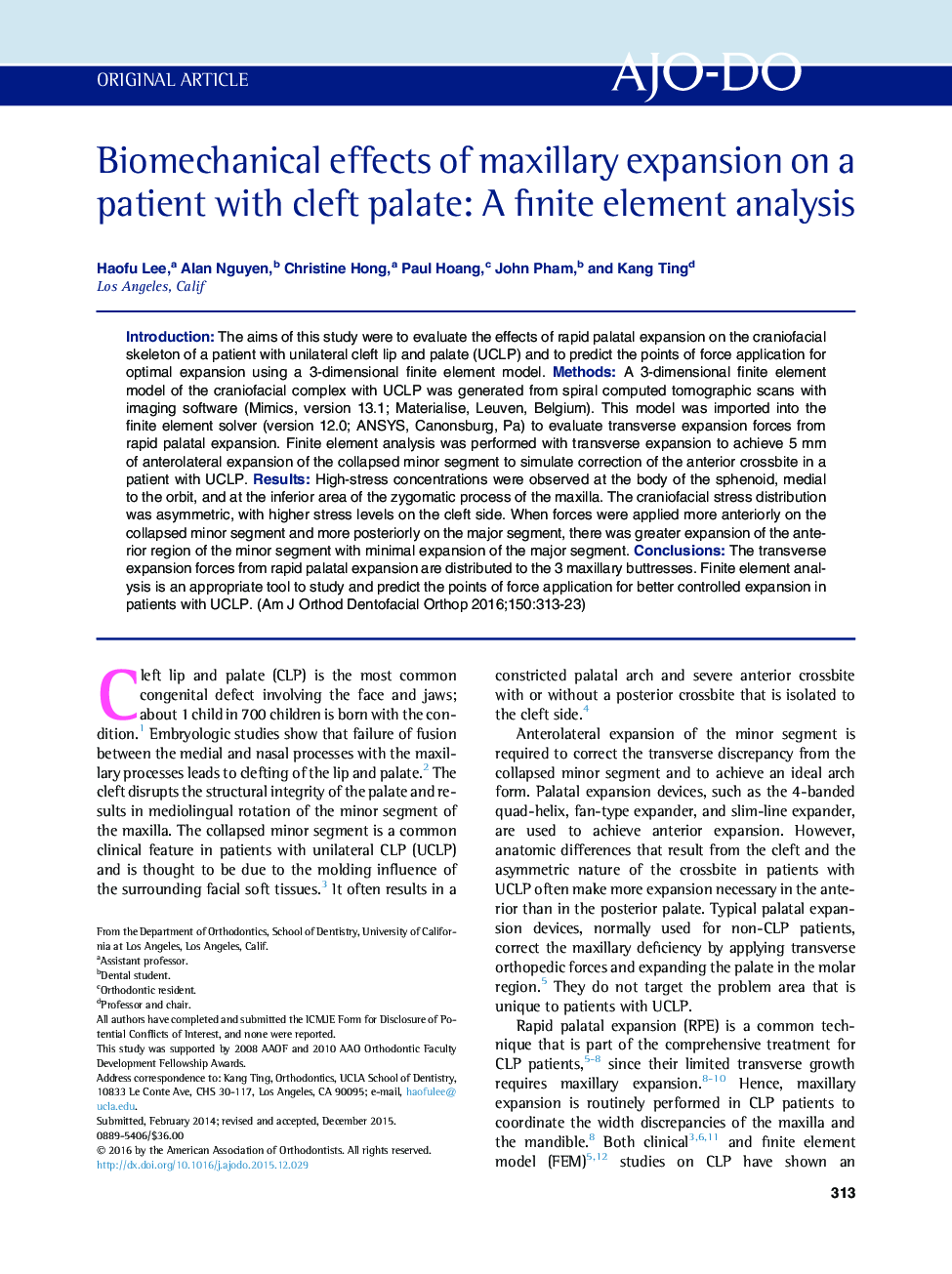| Article ID | Journal | Published Year | Pages | File Type |
|---|---|---|---|---|
| 3115418 | American Journal of Orthodontics and Dentofacial Orthopedics | 2016 | 11 Pages |
•In unilateral cleft lip and palate patients, asymmetric stress distribution results from transverse expansion forces.•Stress at the body of the sphenoid bone, cleft side, is 1.5 times greater than at the normal side.•For more expansion of the minor segment, apply expansion forces anterior to it, posterior to the major segment.•In anterior and posterior crossbite patients, apply expansion force posteriorly to both segments.
IntroductionThe aims of this study were to evaluate the effects of rapid palatal expansion on the craniofacial skeleton of a patient with unilateral cleft lip and palate (UCLP) and to predict the points of force application for optimal expansion using a 3-dimensional finite element model.MethodsA 3-dimensional finite element model of the craniofacial complex with UCLP was generated from spiral computed tomographic scans with imaging software (Mimics, version 13.1; Materialise, Leuven, Belgium). This model was imported into the finite element solver (version 12.0; ANSYS, Canonsburg, Pa) to evaluate transverse expansion forces from rapid palatal expansion. Finite element analysis was performed with transverse expansion to achieve 5 mm of anterolateral expansion of the collapsed minor segment to simulate correction of the anterior crossbite in a patient with UCLP.ResultsHigh-stress concentrations were observed at the body of the sphenoid, medial to the orbit, and at the inferior area of the zygomatic process of the maxilla. The craniofacial stress distribution was asymmetric, with higher stress levels on the cleft side. When forces were applied more anteriorly on the collapsed minor segment and more posteriorly on the major segment, there was greater expansion of the anterior region of the minor segment with minimal expansion of the major segment.ConclusionsThe transverse expansion forces from rapid palatal expansion are distributed to the 3 maxillary buttresses. Finite element analysis is an appropriate tool to study and predict the points of force application for better controlled expansion in patients with UCLP.
